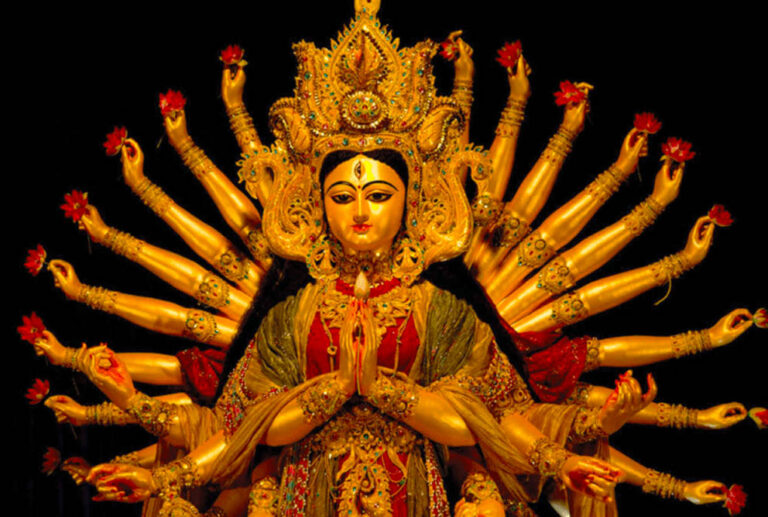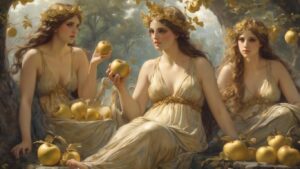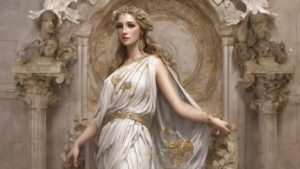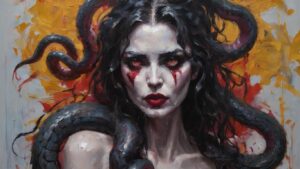Table of Contents
What Is Demigod?
A demigod is an individual in mythology who is born from the union of a god and a mortal. Possessing both divine and human attributes. The term “demigod” derives from combining “demi,” meaning half, and “god.” These beings often portray extraordinary abilities, strengths, or qualities beyond ordinary humans but are not considered full gods.
Demigods can be created in various ways:
Direct Offspring: In some myths, gods directly mate with mortals, resulting in the birth of demigods. These unions are sometimes consensual, while in other cases, they may involve divine seduction or interference.
Heroic Achievements: In certain mythologies, individuals can attain demigod status through exceptional heroic deeds, earning divine favor or parentage after their death.
Divine Intervention: Gods may bestow their divine essence upon a mortal, endowing them with special abilities or qualities, effectively making them demigods.
Notable examples of demigods include Heracles (Hercules) in Greek mythology, who is the son of Zeus, and Perseus, the son of Zeus and Danaë. These individuals often play pivotal roles in myths and legends, undertaking heroic quests or facing extraordinary challenges. The concept of demigods has been a recurring theme in various mythological traditions worldwide, each with its own unique stories and characters.
Appearance
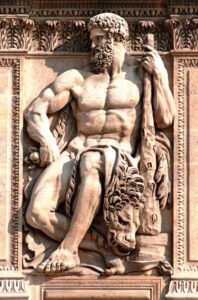
Physical Perfection: Demigods, exemplifying physical perfection, are characterized by their larger, more muscular frames and almost invariably exceptional beauty. This physical excellence, as a manifestation of their divine heritage, unequivocally sets them apart from regular humans.
Radiance or Glow: In artistic representations, some demigods may be portrayed with a faint glow or radiance, serving as a subtle visual cue that symbolizes their divine nature and effectively distinguishes them from ordinary mortals.
Symbolic Attributes: To convey a demigod’s divine parentage, artists often employ symbolic attributes. For instance, a demigod associated with a specific deity might carry symbols or items closely tied to that divine figure, establishing a visual link to their celestial lineage.
Physical Strength: Across many mythologies, demigods boast extraordinary physical strength or abilities. This strength, prominently showcased in their appearance, serves as a testament to their prowess in feats that extend beyond the capabilities of regular humans.
Beauty and Grace: Descriptions of demigods consistently highlight their possession of exceptional beauty and grace. This attractiveness not only mirrors their divine lineage but also functions as a visual marker underscoring their unique status among mortals.
Heroic Attire: Certain depictions of demigods feature them in distinctive attire or armor associated with heroism. These garments serve as powerful symbols, representing the demigod’s heroic feats and reinforcing their divine origins in visual narratives.
It is crucial to recognize that the appearance of demigods can vary significantly across different cultural and mythological traditions. Artists and storytellers interpret and represent these figures in diverse ways, contributing to the rich tapestry of demigod mythology worldwide.
Demigods history
The concept of demigods has a rich history rooted in various mythological traditions around the world. Here is an overview of the history of demigods, with a focus on their prominence in Greek and Roman mythology:
Ancient Mythology:
Greek Mythology: Homer and Hesiod: The earliest surviving works of Greek literature, attributed to poets like Homer (8th century BCE) and Hesiod, introduced demigods as figures of both divine and mortal parentage. Furthermore, heroes like Achilles and Heracles (Hercules) gained renown for their exceptional feats and heroic deeds, seamlessly blending the divine with the human.
Epic Cycle: The Epic Cycle, a collection of lost epic poems, significantly expanded on the stories of demigods, particularly focusing on the exploits of heroes during and after the Trojan War. Notable works, such as the “Iliad” and the “Odyssey,” became foundational in this narrative tradition.
Tragedies and Comedies: Moving forward, playwrights like Aeschylus, Sophocles, and Euripides further explored the lives of demigods in tragic plays. They delved into profound themes such as fate, hubris, and the complex relationships between gods and mortals.
Hellenistic Period: As the post-classical period unfolded, demigod narratives continued to evolve, often influenced by Hellenistic literature and the merging of Greek and non-Greek cultures.
Roman Mythology:
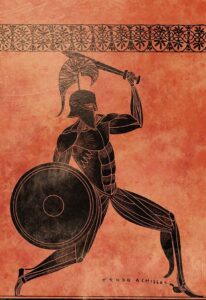
Adaptation from Greek Myth: Roman mythology, heavily influenced by Greek mythology, not only adopted but also adapted the concept of demigods. This transformative process is evident in Roman demigods like Aeneas, who emerged as central figures in Roman epic poetry, particularly in works such as Virgil’s “Aeneid.”
Medieval and Renaissance Periods:
In the realm of Medieval Literature, the Christian Influence reshaped classical mythology. With the ascendance of Christianity, the tales of demigods underwent reinterpretation. These stories were often woven into moralized allegories within the Christian worldview, casting demigods as symbols of either virtue or vice.
Moving into the Renaissance Revival, characterized by the Rebirth of Classical Ideas, there was a resurgence of interest in classical literature, art, and philosophy. This cultural rebirth sparked a renewed appreciation for the stories of demigods as originally depicted in ancient Greek and Roman texts. This period witnessed a vibrant reconnection with the classical past, breathing new life into the enduring tales of these mythic figures.
Modern Literature and Popular Culture:
Literary Influence: Poetry and Prose. The works of poets like John Milton and writers like William Shakespeare continued to draw inspiration from classical mythology, thereby contributing significantly to the enduring legacy of demigod narratives. Moreover, their literary contributions served as a bridge connecting the classical past with the evolving literary landscape.
19th and 20th Centuries. Romanticism: Embracing mythical themes, the Romantic movement of the 19th century depicted demigods as embodiments of ideals such as heroism, passion, and the relentless struggle against fate. Transitioning into the 20th and 21st centuries, modern literature maintained a persistent interest in demigods and mythological themes. Notable authors, including C.S. Lewis, J.K. Rowling, and Rick Riordan, continued this tradition, introducing new generations to the captivating world of demigod stories.
Pop Culture: Film and Television. The portrayal of demigods extended into visual media, with movies, TV shows, and animated features exploring these mythic figures. Noteworthy examples include the “Percy Jackson & the Olympians” film series and the television adaptation of Rick Riordan’s novels. This visual representation brought demigod narratives to a wider audience, creating a seamless transition from literature to the dynamic realm of visual storytelling.
Comic Books: In the realm of comic books, superheroes often exhibit demigod-like qualities, drawing direct inspiration from mythological traditions. Characters like Thor serve as prime examples, seamlessly integrating the divine and mortal elements. This dynamic portrayal in comic books adds yet another layer to the enduring fascination with demigod narratives in popular culture.
Ongoing Cultural Impact:
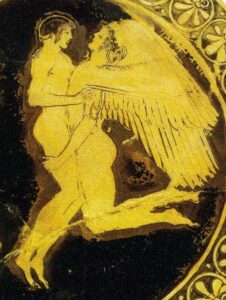
Demigods continue to capture the imagination of audiences worldwide, serving as enduring symbols of heroism, destiny, and the intertwining of divine and mortal elements. Their stories, rooted in ancient mythologies, remain influential in shaping narratives across various forms of artistic expression.
Here are 15 popular and well-known demigods from various mythologies:
Heracles (Hercules): A Greek demigod known for his incredible strength and heroic feats, including the Twelve Labors.
Achilles: A Greek hero and demigod of the Trojan War, famous for his invulnerability, except for his heel.
Perseus: A Greek demigod and hero who slayed the Gorgon Medusa and rescued Princess Andromeda.
Theseus: A Greek demigod and hero known for defeating the Minotaur in the labyrinth of Crete.
Aeneas: A Trojan hero and demigod in Roman mythology, featured in Virgil’s “Aeneid” as a founder of Rome.
Hercules (Heracles): A Roman adaptation of the Greek Heracles, known for his strength and Twelve Labors.
Asclepius: A Greek demigod associated with healing and medicine. Often depicted with a serpent-entwined staff, known as the Rod of Asclepius.
Atalanta: A Greek heroine and demigod, known for her exceptional skills in hunting and archery.
Pollux and Castor: Twins in Greek mythology, with Pollux being the son of Zeus (a god) and Castor the son of a mortal, highlighting their demigod status.
Helenus: A son of Priam and Hecuba in Greek mythology, possessing prophetic abilities as a demigod.
Peleus: The mortal father of Achilles in Greek mythology, emphasizing the demigod status of Achilles.
Demigod FAQ
What demigod am I?
Determining which demigod you might be is a subjective and imaginative exercise, often influenced by personal interests, traits, or characteristics. In many mythologies, demigods possess unique qualities or powers based on their parentage.
For example, in Greek mythology, if you value wisdom and knowledge, you might resonate with Athena's qualities, while a preference for the sea and water could align with Poseidon's traits. In Roman mythology, if you are associated with war and strategy, you might find similarities with the qualities of Mars.
Ultimately, identifying with a demigod is a fun and creative way to explore aspects of your personality and interests through the lens of mythology. It's not a serious or definitive categorization but rather a playful exercise inspired by the rich tapestry of mythological stories.
